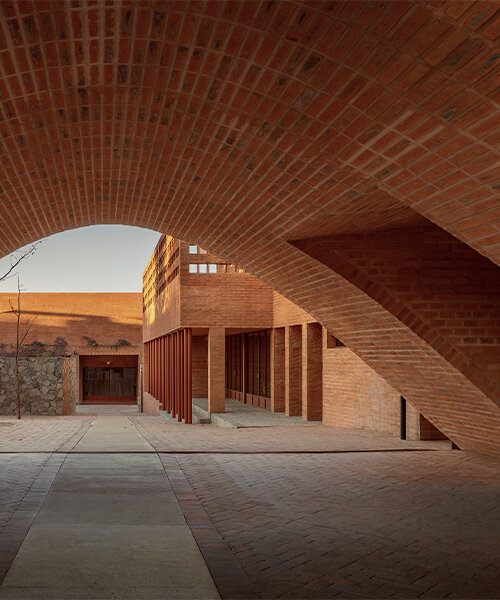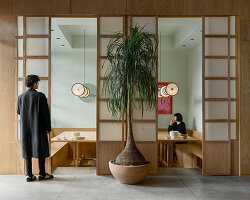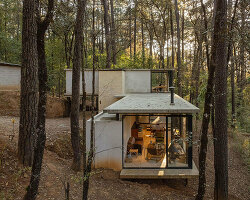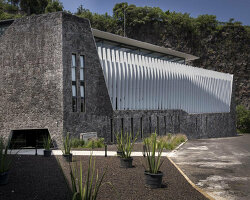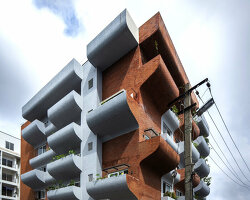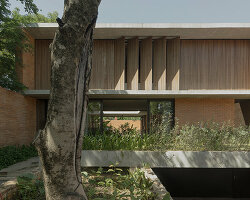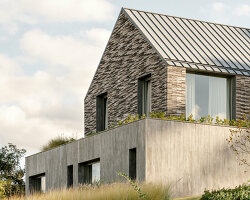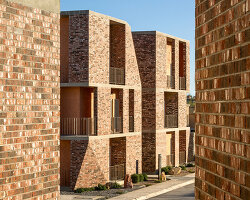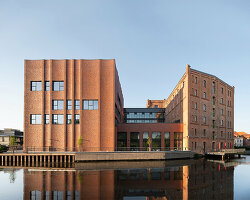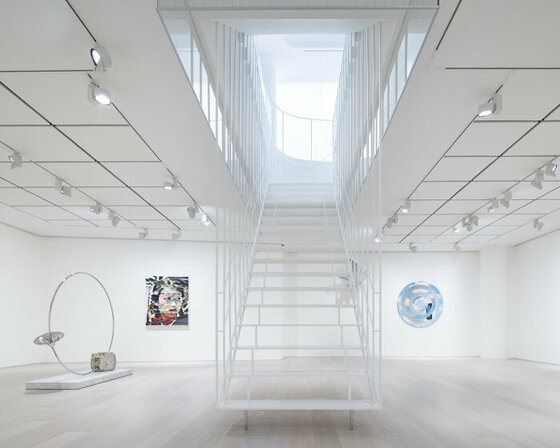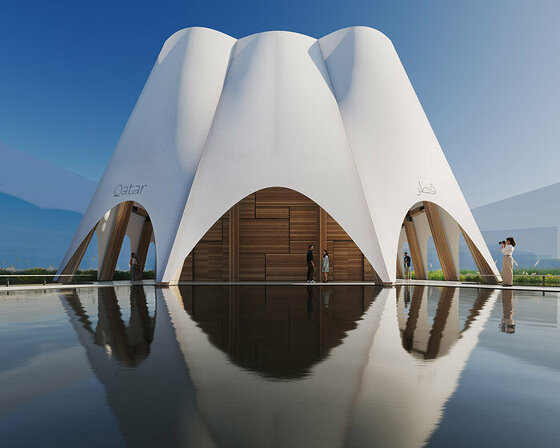center for culture and arts of the lakeside by atelier ars
The Jalisco Ministry of Culture commissioned Mexico-based practice ATELIER ARS to expand an existing auditorium into a brick-and-clay cultural center along Lake Chapala, the largest in the country. The completed structure is home to the ‘Cultura Cardinal’ (Cardinal Culture) program that seeks to decentralize Mexican culture and disseminate it in different regions of Jalisco through the construction of other complexes. Boasting a moderate climate and peaceful lifestyle, the center’s location along the lakeside features Mexico’s most important settlement of foreigners. ‘For us, it was essential that our project could communicate part of the site’s cultural history. That is why we took on the task of investigating and knowing some of the founding myths of the ancient Wixárika culture, which has one of its most important ceremonial centers in Lake Chapala,’ notes the practice.
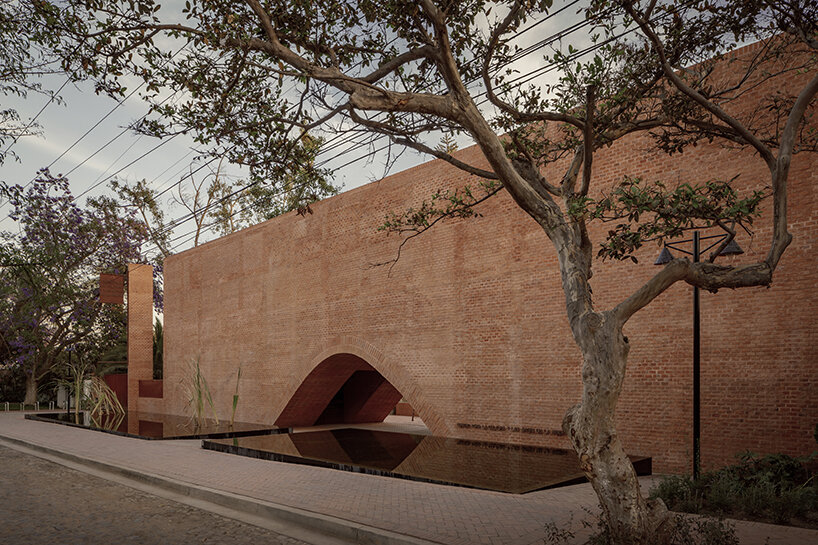
all images © César Béjar
unveiling past geologic eras and the myths alluding to them
According to the team at ATELIER ARS, this cultural history is intimately linked to the country’s historical natural formations. In the Paleozoic era, the lake was part of a fjord in the Pacific Ocean where, due to volcanic activity, the topographic system known as the Mexican Transversal Neovolcanic Axis came to life. This phenomenon divided the great inland sea to which Lake Chapala belonged and, over the centuries, produced Mexico’s current ecosystem rich in a mineral configuration of subsoil, flora, fauna, and climate. Among this flourishing ecosystem, the presence of the lake becomes a fundamental factor for understanding local founding cultures.
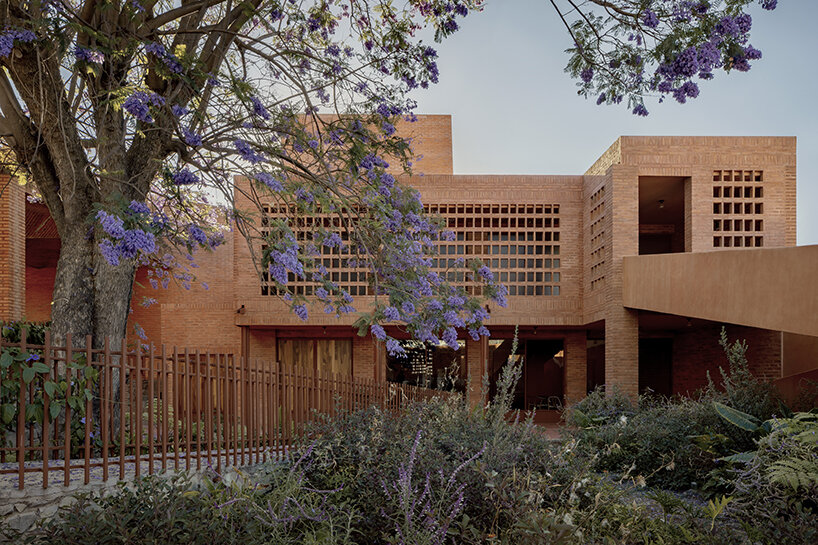
using traditional clay and brick building methods
Indeed, several myths of pre-Hispanic cultures allude to these topographic processes and aquifer formations. ‘Its legends tell us about the emergence of the lake through a drying process, in which a goddess sank her walking stick into the seabed, causing the water to drop and also producing the formation of an islet in the same place that today is still the most important sanctuary of the Wixárika culture. Our intervention tries to narrate some of these myths through simple and understandable ways for anyone, that we address in three different moments as a part of a landscape narrative,’ writes ATELIER ARS.
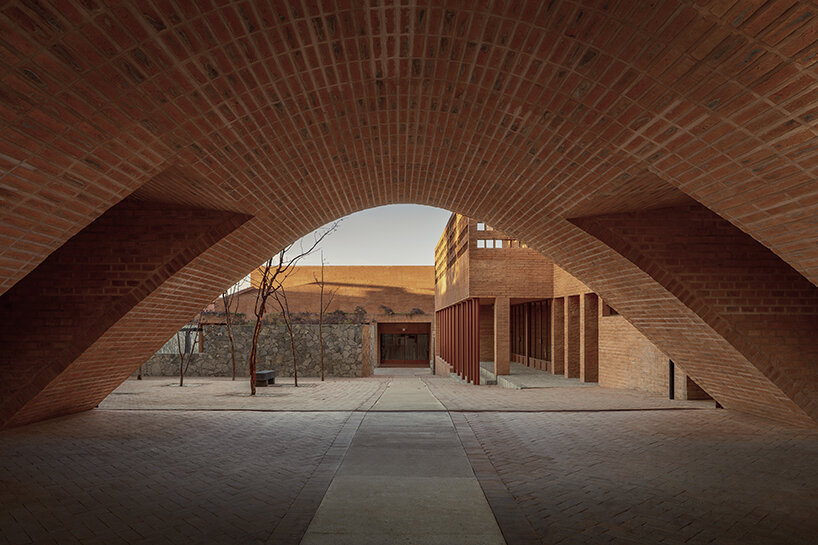
arched passageways punctuating the design
recovering and expanding the pre-existing
To design the new cultural center, the team first recovered the site’s pre-existing auditorium for 400+ people and an office building. Already dressed in a portico with brick vaults, the auditorium was recognized as the most valuable element of architectural precedence. ‘That is why we decided that the rest of the buildings should be built using traditional clay elements from the region, as well as different formats and construction systems, to produce a sense of unity, and in turn, as a way to help perpetuate the artisan knowledge still found in the region,’ continues the team.
Once recovered, these features were integrated into the new complex, to which ATELIER ARS added four new elements: a library, a longitudinal service building with a classroom for music, a dance room and open-air amphitheater, and finally, a large central reflecting pool. Wanting to create a sense of enclosure, the architects aligned the library with the avenue and used the services building to close off the eastern part of the plot.
Built entirely with load-bearing brick walls, the library comprises a sawtooth roof illuminating the reading room on the first floor and a brick vault on the ground floor serving as the main entrance to the complex. The curvature of the arch along its eastern part accommodates an outdoor bleacher next to a large existing tree, where all kinds of informal meetings can take place. Meanwhile, the pond — the first moment in the landscape narrative — that runs along the entire façade includes two ‘planter islands’ evoking the lake. These islands are also rich in species native to the region.
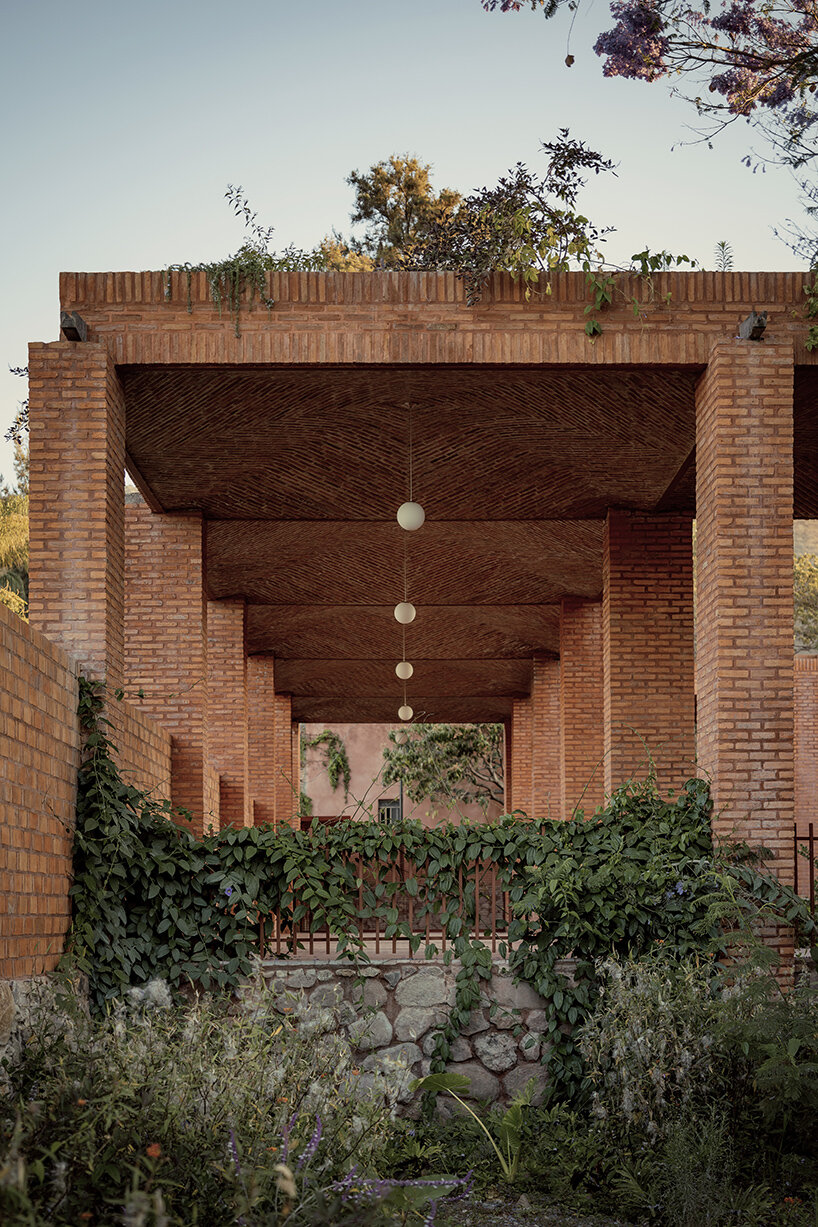
creating a sense of expansion and mysticism
Moving on to the library interiors, ATELIER ARS clad the surfaces using a terracotta-colored cement coating to give a sense of uniformity to the entire building. Enlivening that warm texture is a generous inpouring of diffused lighting from the sawtooth roof, thanks to a series of glass blocks. Complementing that peaceful composition is a single bookcase that runs through the space from the ground floor to house the library’s book collection. These spaces ultimately serve as a multipurpose hub where children’s activities, book presentations, and meetings can occur.
As for the amphitheater, visitors can access it either from the building’s upper floor or a small entrance square paved in industrialized brick and peppered with eleven ‘Papelillos’ trees, a regional species characterized by a red-bark trunk. ‘From this square, is already possible to observe the first intervened building which now houses a small exhibition hall and the operational offices. Although the existing office building had no heritage value — it is a very generic modern building — we decided to give it a new life through structural reinforcement and ceramic cladding for interior and exterior walls. We also added a brick lattice at the top of the building to enclose a patio for exhibitions and gatherings,‘ add the architects.
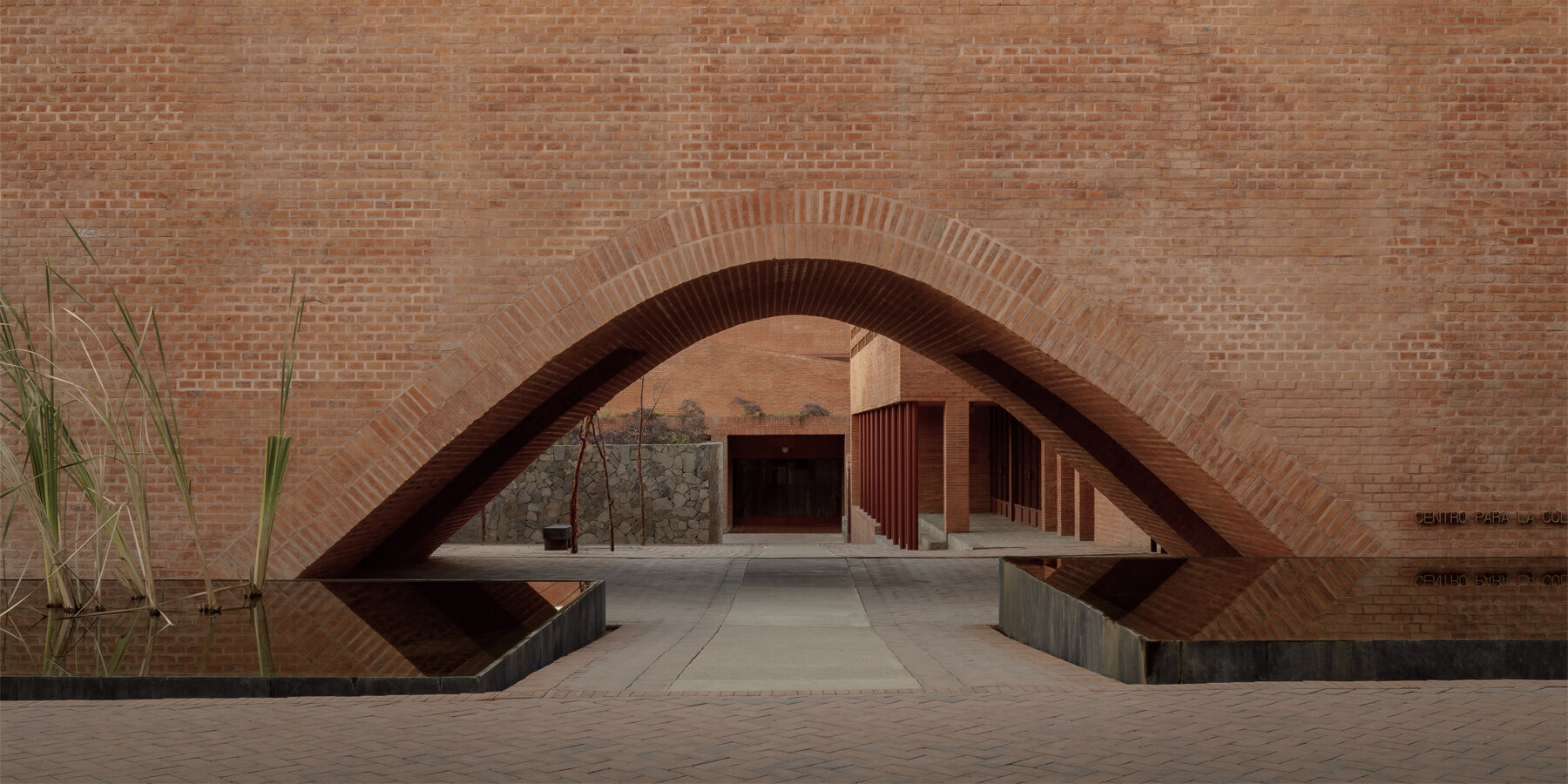
Adjacent to the office building and in front of the auditorium, ATELIER ARS built a reflecting pool surrounded by tall stone planters. In the center of the pond, the practice placed a kind of water vortex, a symbolic element recalling the ‘drying up of the lake’ myth, which tells the story of a shaman who, by burying his walking stick, lowered the water level to make way for the formation of the lake. This is the second moment in the landscape narrative, emphasized by an oblique, interior trace of the planters — like a ‘trompe l’oeil’– to produce an even greater sense of spatial depth.
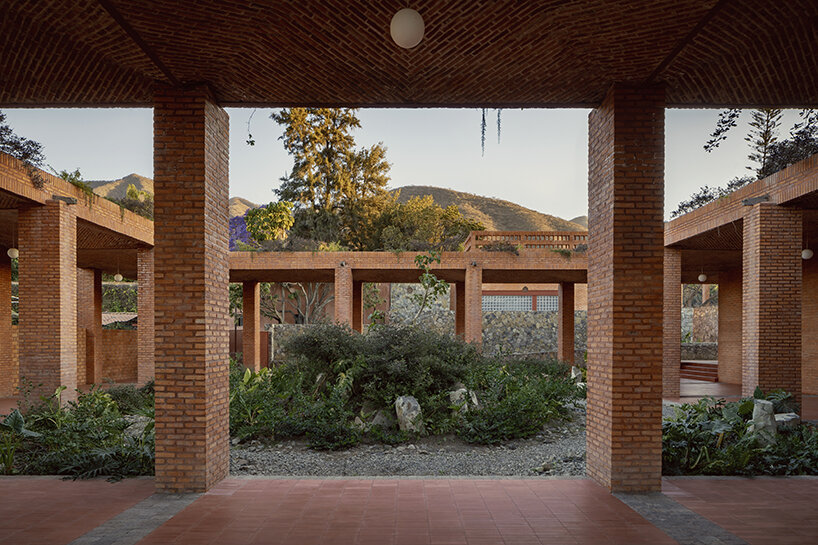
courtyard area
Moreover, the eastern limit of the complex is occupied by a longitudinal service building hosting a warehouse, toilets, a cafeteria, a terrace, an open-air theater, as well as music and dance halls. The building recovers the archetypal house shape and boasts overlapping ceramic elements reminiscent of the ‘tejamanil’, a shingle-like cladding typical of many local vernacular traditions. ‘The building section evolves with the descending topography until obtaining two levels. On its upper floor sits a dance room with an overhead light running through the entire vault. The space’s interior has been conceived as a long fugue in visual relation to the small open-air amphitheater. It is, therefore, a building with a very long internal perspective,’ shares ATELIER ARS.
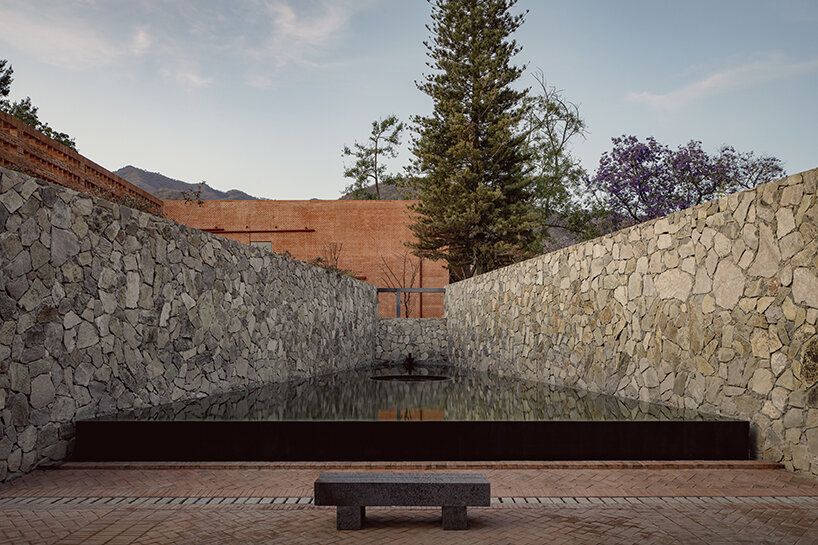
reflective pool
The final moment in the landscape narrative unfolds at the center of the former portico space, where an ‘Amate’ tree juts out like a stone promontory, nodding to the myth of the Wirárika sanctuary found in ‘La Isla de los Alacranes’ or Scorpions Island; it tells the story of a shaman who, by burying his walking stick in the stone, brought to life an ‘Amate’ tree to found a sacred altar. Lastly, beyond the former portico space, a more intimate garden precedes a bedroom area that accommodates artists who visit the cultural center. The architects transformed the existing wing by cladding it in brick and forming screens to protect the area from excessive solar radiation. ‘The hybrid nature of the project — the pre-existing and the new — made us reflect on the possibilities of using the same material and its ability to meet different construction needs. But the main lesson consisted in witnessing again the enormous nobleness and expressive capacity of the handmade brick,’ concludes the atelier.
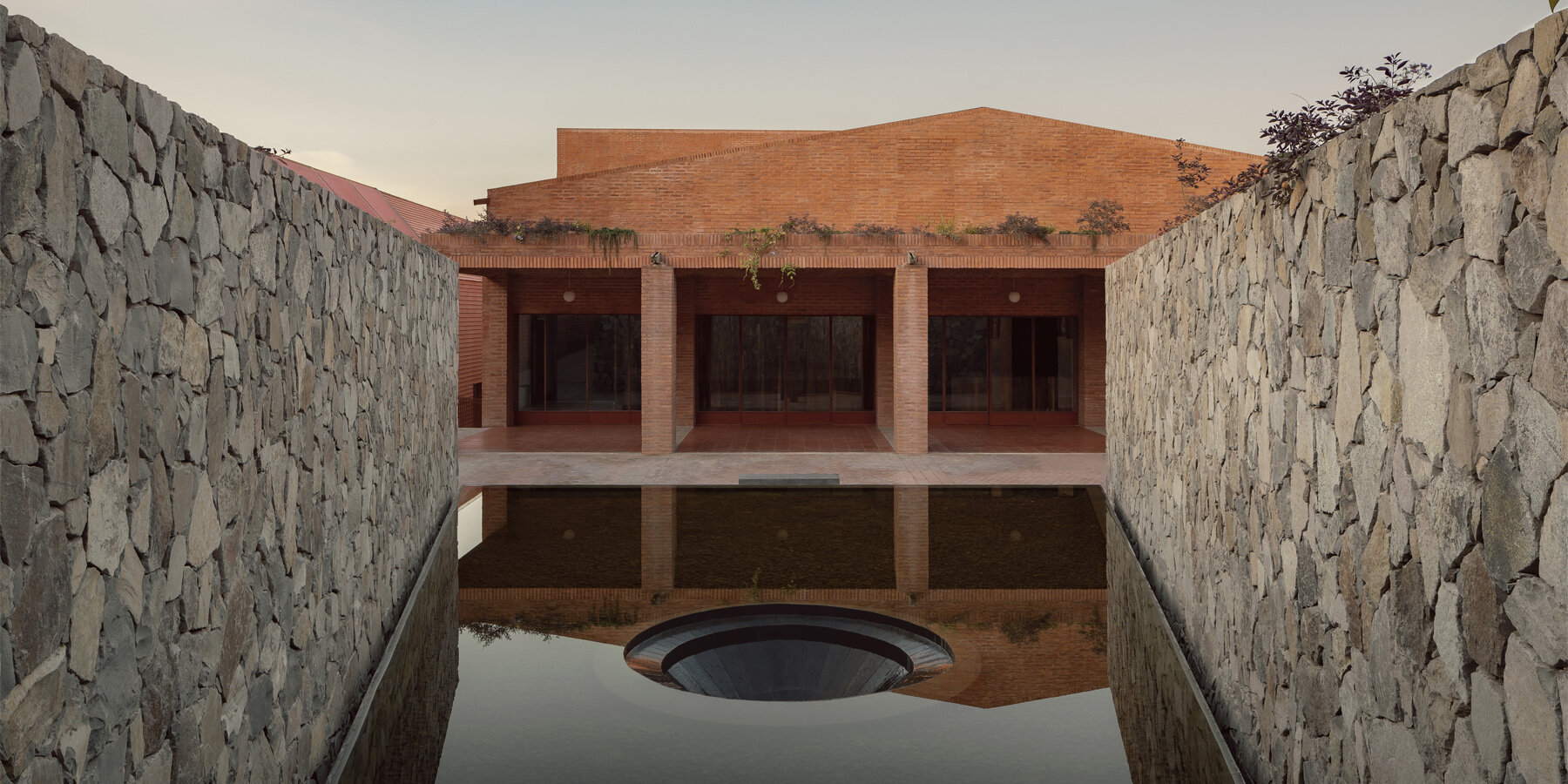
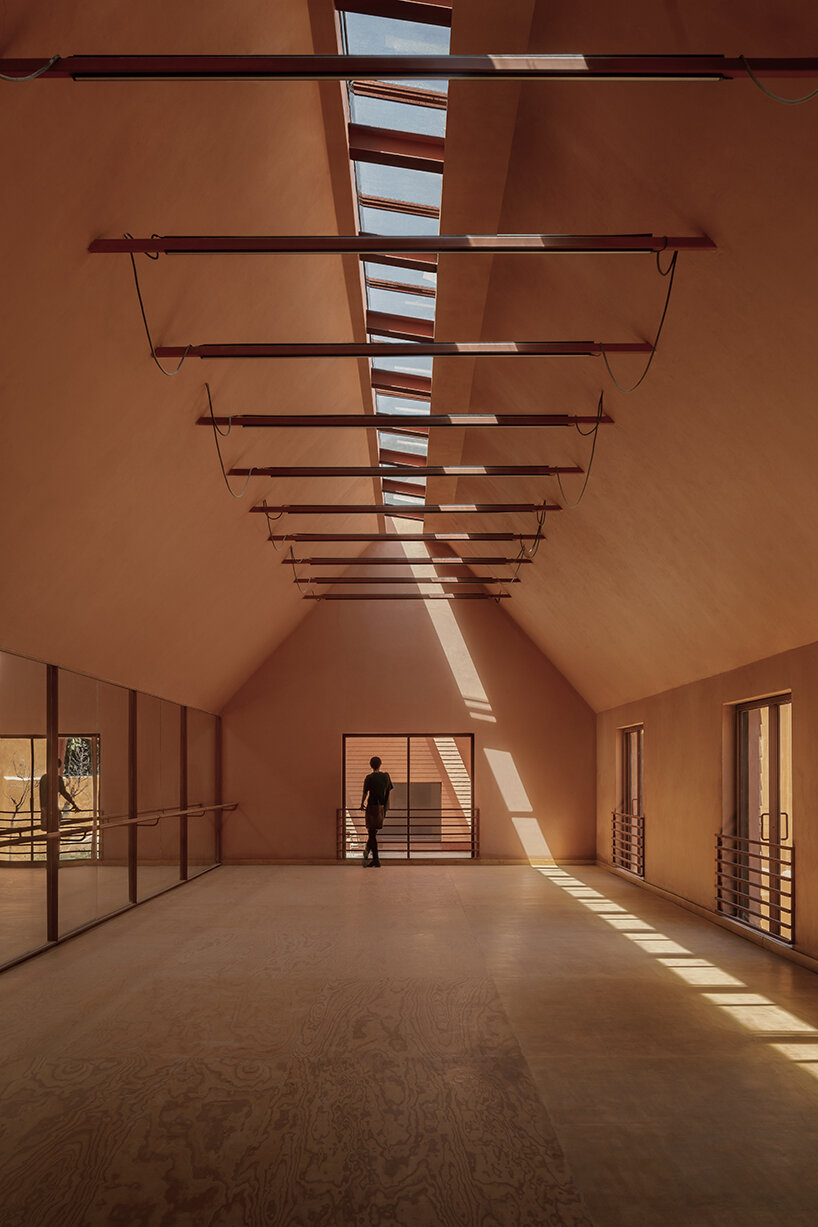
sawtooth roof bringing in diffused lighting
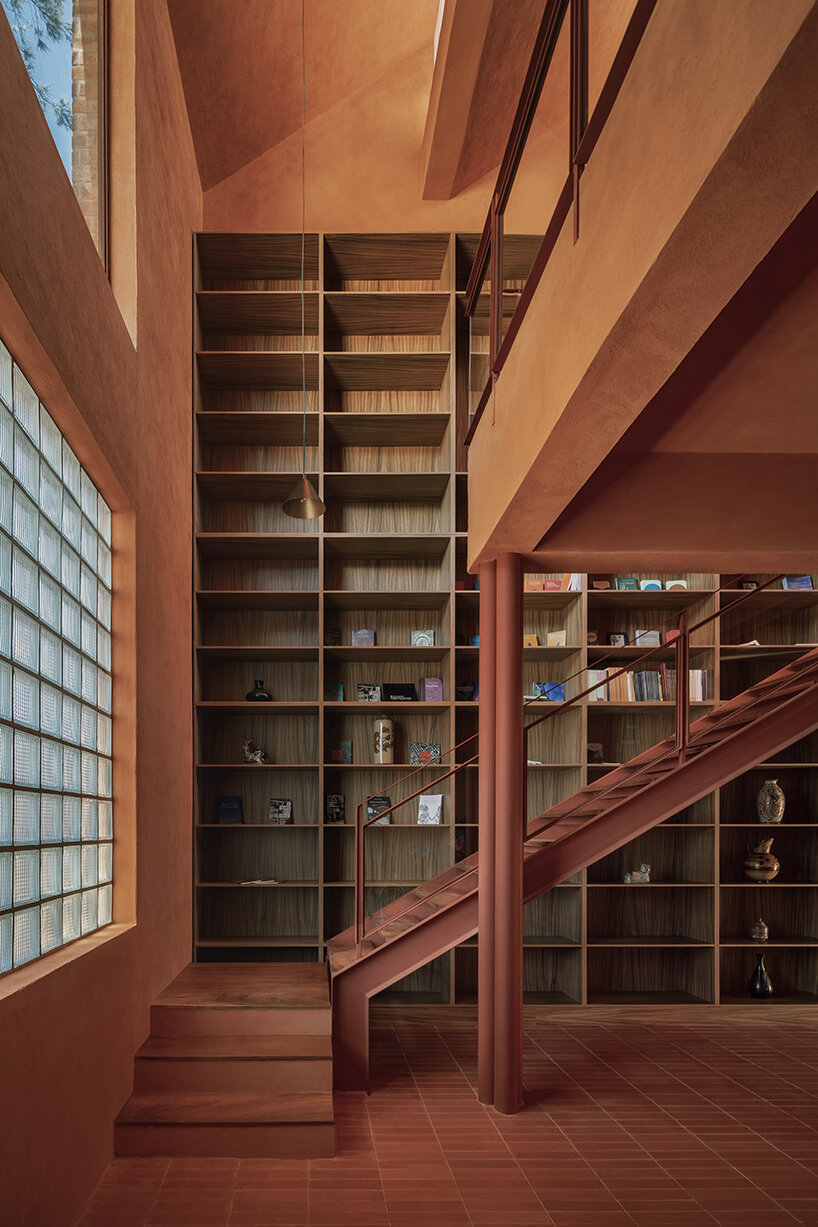
library space with a single bookcase running along one side
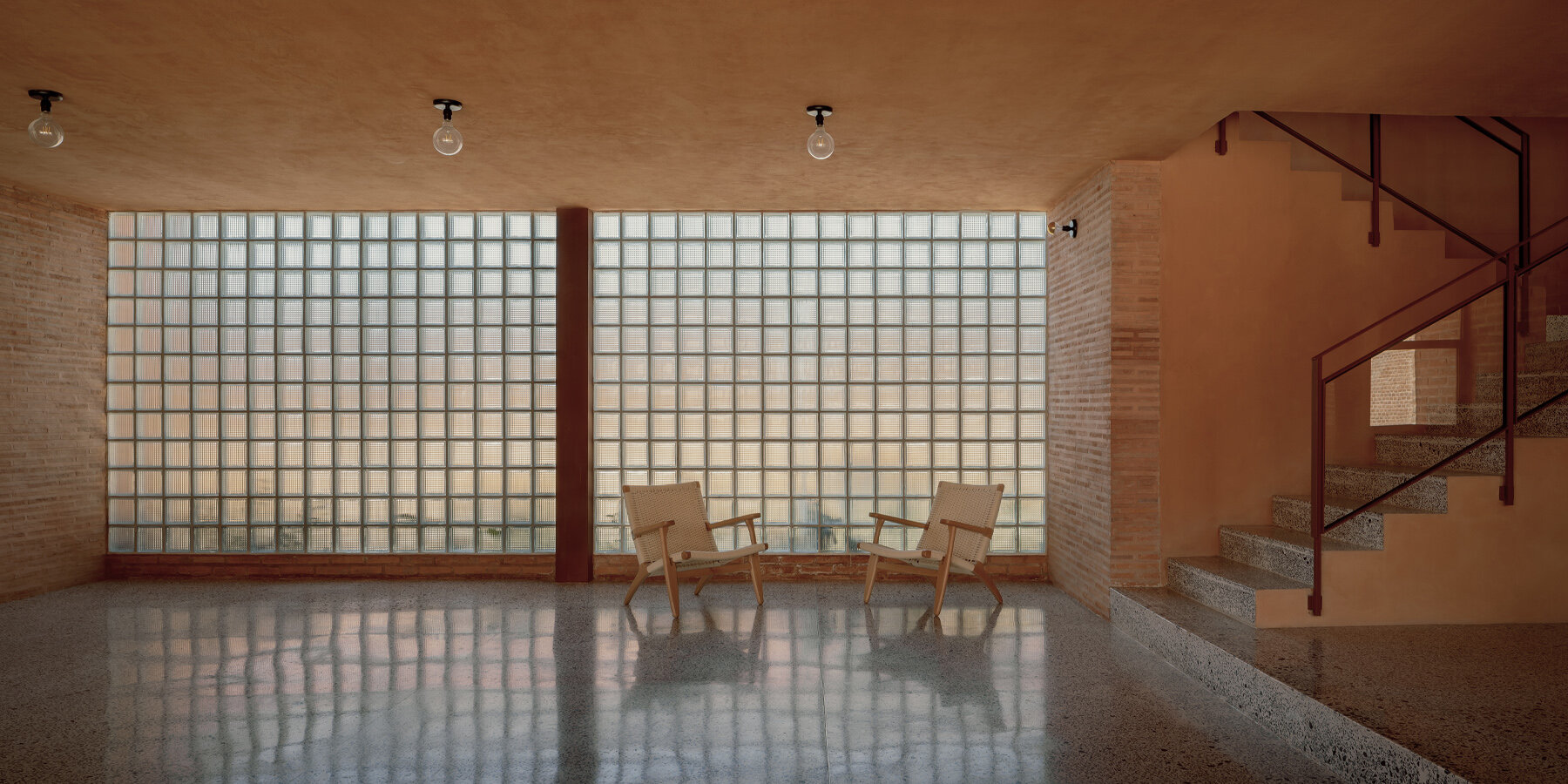













project info:
name: Center for Culture and Arts of the Lakeside
location: La Floresta, Ajijic, Jalisco, México
client: Ministry of Culture of the State of Jalisco
architecture: ATELIER ARS | @atelier_ars – Alejandro Guerrero, Andrea Soto
project lead: Isabel Castiello
team: Roberto González, Inés Plasencia, Diego Orduño
construction: SIOP – Secretariat of Infrastructure and Public Works of the State of Jalisco
photography: César Béjar | @cesarbejarstudio
site area: 5,332 sqm
built area: 3,100 sqm
project year: 2020
construction period: 2021-2022
architecture in mexico (613)
brick architecture (320)
PRODUCT LIBRARY
a diverse digital database that acts as a valuable guide in gaining insight and information about a product directly from the manufacturer, and serves as a rich reference point in developing a project or scheme.
